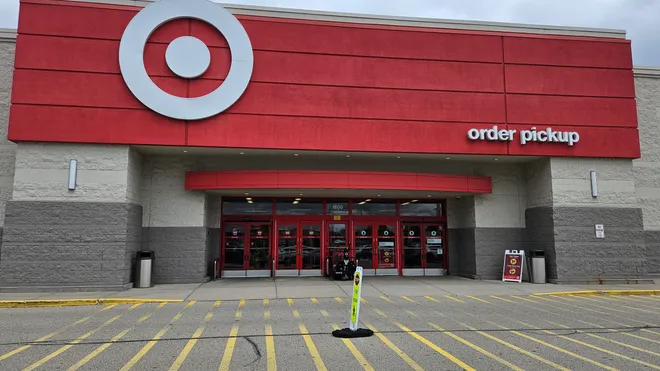After two men were fatally shot last year near her home in the Mount Vernon Avenue area, Kimaiya Brown knew she had to get her two young children out of the neighborhood.
She looked in the Grove City area to be closer to her father but found nothing.
“There are places out there I could afford, but they have long waiting lists. One income-based complex had a seven-year waiting list,” said Brown, who works for a medical billing company in the Worthington area.
Grove City, which has several affordable-housing complexes, is actually one of the best central Ohio suburbs to find less-expensive housing. Had Brown looked in many Columbus suburbs, she would have found nothing at all.
As the Columbus region is expected to boom — growing by more than 1 million people in the next few decades — it has become increasingly difficult to find housing in many of the city’s suburbs for people not in top income brackets.
There are no affordable housing complexes, for example, in Powell, or anywhere else in southern Delaware County, beyond a small senior housing complex in Lewis Center. There are also none in New Albany and one each in Worthington, Upper Arlington and Pickerington, after a Dispatch examination of apartment projects finances by low-income housing tax credits and U.S. Department of Housing and Urban Development’s Section 8 vouchers.
That examination of projects revealed a widespread lack of affordable housing throughout central Ohio suburbs. While there are exceptions, such as Whitehall, Reynoldsburg, Grove City and Pataskala, most Columbus-area suburbs offer no opportunities beyond an isolated apartment or two for low- or moderate-income renters.
Even individuals hoping to use federal rent subsidies, known as Section 8 housing vouchers, will find the going tough in Columbus suburbs. In Powell, two vouchers are used, and in several communities including New Albany, Lewis Center and Upper Arlington, not a single voucher is used as of March 28, according to data from the Columbus Metropolitan Housing Authority.
Housing advocates see the shortage of affordable suburban housing as a major barrier to mobility and opportunity because it limits access to jobs, safe neighborhoods and good schools; perpetuating a cycle of poverty.
“There’s definitely a lack of affordable housing in the suburbs,” said Amy Klaben, founder of Move to Prosper, a Columbus nonprofit that subsidizes rental costs for single mothers such as Brown to live in the suburbs. “Working people in low- to medium-income jobs can’t find places they can afford in the suburbs.”
Klaben and others say the lack of affordable suburban housing presents a practical problem as well: Lower-paid workers in suburban stores, offices, warehouses and elsewhere can’t afford to live near their jobs. Even at the Intel factories being built in New Albany, up to one-third of workers will earn less than $50,000 in a community without one affordable housing development.
What is affordable housing, and where is it found in the Columbus area?
Affordable means different things to different people, but experts typically define housing as affordable when it costs no more than 30% of a tenant’s income. A household earning $5,000 a month, for example, would pay no more than $1,500 a month on rent, utilities and other housing costs to be considered affordable.
Housing experts cite several reasons for the lack of affordable suburban housing complexes, including cost of land and availability of sites.
But they also argue the shortage is by design. Zoning and building codes, in addition to often intense neighborhood opposition, make it almost impossible to build affordable housing in many Columbus suburbs such as southern Delaware County, Upper Arlington or New Albany.
“It’s tough to find any developable multifamily zoning anywhere,” said Jon White, a development specialist with Woda Cooper Cos., a Columbus-based affordable housing builder.
New Albany, for example, has multiple residential zoning districts, including large areas set aside for “residential estate,” “low-density single-family residential” and “suburban single-family residential” uses. It has no land specifically set aside for multifamily, or apartments, although it does allow apartments under certain conditions in its “urban core” area. Five years ago, the 122-apartment complex Market & Main opened in the district. Apartments in the complex start around $1,400 a month for a 663-square-foot studio and top out at more than $4,000 a month.
Last year, the city also approved a type of development called a “hamlet” that allows a variety of uses, including apartments. The city has approved one 33-acre hamlet development at New Albany Condit Road (State Route 605) and Central College Road, which includes apartments.
New Albany Planning Manager Stephen Mayer sees the hamlet as an example of the city broadening its mix of housing, but he acknowledges the city isn’t known for its affordability.
“The hallmark of New Albany residential is high-quality architecture and an emphasis on lot arrangement,” he said. “Those are characteristics of our success, but we’re always evaluating other opportunities for other housing types.”
Powell likewise has no designated multifamily zoning district but does allow apartments in six of its nine zoning districts, said Assistant City Manager and Community Development Director Jeffrey Tyler. While the city is home to one conventional apartment complex, off Sawmill and Seldom Seen roads, and some senior housing, neither would be considered affordable housing. Tyler said he is not aware of any affordable housing complex proposed for the city. But he sees land, not zoning, as the main obstacle.
“We just don’t have a lot of available land in the city limits to provide that kind of construction,” he said.
Stereotypes, NIMBY-ism and zoning codes are barriers
Opposition to apartments can be instinctive in the suburbs, and when “affordable” is added to the mix, builders must battle images of crime-infested urban high-rises from decades past, even though the apartments might still rent for $1,000 or more a month.
“I can’t tell you how many public meetings I’ve been to where I hear, ‘We don’t want these people next to me,'” said Alexis Dunfee, senior vice president of development at Wallick Communities, a New Albany-based affordable homebuilder. “I say, ‘This is your son who wants to come back to live after school, your teacher, your policeman, your workers who just want to live near their jobs.'”
Even when builders manage to find a suburban site that’s zoned for apartments, barriers materialize. Wallick secured a site in Delaware County’s Berkshire Township for a 300-unit apartment complex that would have rented to those making up to 120% of the area median income, or about $80,000 a year.
“The application was repeatedly denied,” Dunfee said. “It was very clear they were just going to throw everything our way. They had building codes that just made it impossible — we needed to have four-sided brick on the buildings, or 5% to 10% open spaces, or 25% fenestration (windows).”
After pursuing the project for more than two years, Wallick eventually moved on, Dunfee said.
Berkshire Township Administrator Kevin Vaughn said the project was denied because it would have created two non-conforming adjacent properties, not because of any resistance to apartments. Vaughn noted that two market-rate apartment complexes exist in Berkshire Township and two more are under construction. Whether the proposal is for affordable housing doesn’t matter, he said.
“We don’t even ask that question,” he said. “That doesn’t matter, as long as they are in compliance with our zoning code.”
This week, voters in the township overwhelmingly rejected a proposal to built 91 homes on 88 acres, which some residents considered too dense.
Ginther organizing a coalition of regional affordable housing experts
Columbus Mayor Andrew J. Ginther is working on a regional housing coalition among the city, suburbs and others to boost the lagging housing supply, led by himself; Lark Mallory, president and CEO for the Affordable Housing Trust for Columbus and Franklin County; and Kenny McDonald, president and CEO of the Columbus Partnership.
“We have to increase the housing supply as much as possible. It’s important for Columbus to lead the way,” Ginther said.
In November, he told The Dispatch that Columbus couldn’t resolve the affordable housing challenge by itself — that the suburbs had to step up. This was after Columbus voters approved a $200-million bond package toward affordable housing efforts.
The coalition will work with the Affordable Housing Alliance of Central Ohio, the Urban Land Institute, Franklin County RISE Together and the Mid-Ohio Regional Planning Commission to create a “concrete list of actions” by the end of the year.
In 2020, the regional planning commission issued its Regional Housing Strategy report that listed four barriers to addressing housing issues:
- Not-in-my-backyard attitudes and negative perceptions about housing density and affordability
- Significant variations in local policies, processes and standards
- Increasing costs of residential development, including land costs, site selection and regulatory costs
- The lack of assistance, from help with rent to support for home repairs, and an over-dependence on Low-Income Housing Tax Credits to produce affordable housing in the region.
“This is going to be hard,” Ginther said. “It will require us to do things differently than in the past 30, 40, 50 years.”
Upper Arlington, Reynoldsburg seek to be part of the solution
Steve Schoeny, city manager for Upper Arlington, said talks continue with Columbus officials about a vision for the West Henderson Road corridor between the two cities that could include multifamily housing, perhaps affordable housing.
Schoeny mentioned that Upper Arlington has seen 800 units of multifamily housing open between Lane Avenue and the Kingsdale Shopping Center to the north.
Yes, many are expensive. But he said if those units hadn’t been built, people would have looked elsewhere.
“Were those hundreds of units not there, they would be bidding up the price elsewhere,” he said.
Catherine Kennedy leads the board of Equal UA, a grassroots group pushing for more affordable housing toward what she calls a “just, diverse and vibrant” Upper Arlington.
But it goes beyond affordable housing for those who want to live there, Kennedy said.
“We are not in a bubble. We’re proud to be in a growing region. We realize we are in this together, we see ourselves as part of a team. We want to be part of the solution,” she said.
Reynoldsburg Mayor Joe Begeny sees his city as part of the solution too. But he said it would have to be equitable among all communities.
In 2020, Reynoldsburg passed a zoning code that allowed more multifamily housing.
Begeny said that since 2020, Reynoldsburg has approved 3,000 apartments, all market-rate. Any type of housing simply is needed, he said. More units would help stabilize soaring rents that are becoming unaffordable for many.
“When people think of affordable housing they think of unfair stereotypes of who’s in affordable housing. It could be a first-year school teacher. It could be a police officer,” he said.
Jameka Humphries moved into a spacious, two-bedroom, two-bathroom Bexley apartment in October through the Move to PROSPER program.
Humphries, 38, had lived for eight years in a three-bedroom rental house in the Hanford Village neighborhood on the East Side. She said she enjoyed living there, liked the back yard, but wanted a safer place for her son. She recalled a time where she had to yank him from his bed after hearing gunshots outside.
“That hasn’t happened around here,” she said.
Humphries is a certified community health worker who works for Columbus Public Schools as a liaison between parents and staff at Fairwood Elementary School, about a 10-minute drive from where she lives.
She never thought she’d be able to afford a place in the suburbs, figuring she’d have to work three or four jobs to do so.
Now she wants to save enough money to become a Bexley homeowner.
“I want to embrace my community,” she said. “This is where I plan to raise Jayden.”
Ohio Housing Finance Agency plays key role in affordable housing locations
A key player in where affordable apartments are built is the Ohio Housing Finance Agency, which awards Low Income Housing Tax Credits, which fund the bulk of those developments.
Carlie Boos, executive director of the Affordable Housing Alliance of Central Ohio, said that’s largely because it awards Low Income Housing Tax Credits, which fund the bulk of those developments.
OHFA officials acknowledge there is a lack of affordable housing in central Ohio suburbs, and say they have adjusted their criteria to encourage suburban development. Projects are favored, for example, if they are in “areas of opportunities,” with good transportation, education, employment and health care.
OHFA has an interactive map to search for developments.
According to OHFA’s 2022 report on the region’s housing needs, central Ohio’s 11 counties had 34 affordable and available units for every 100 extremely low-income households, those who earn less than 30% of the area median income. The statewide average is 44 per 100. In 2022 in Franklin County, 30% of the area median income was $19,700 for a one-person household and $28,100 for a four-member family.
In 2022, 30 of 76 applications statewide were approved by OHFA. For this round the agency received 69 applications, and expects to fund 25 to 30.
OHFA officials say developers must demonstrate need for affordable housing, and that the need is greater in less-affluent areas than in suburbs.
Glennon Sweeney, the senior research associate at Ohio State’s Kirwan Institute for the Study of Race and Ethnicity, said she doesn’t think OHFA is the issue in the suburbs as much as opposition to the projects happening at all.
In Worthington, National Church Residences had to go back to the review board there to win approval for The Hartford at Stafford Village, which replaced an existing National Church Residences affordable housing development.
“A lot of developers made the strategic decision not to deal with places like that,” she said.
Still, Worthington City Council continues to consider placing a $1.1-million affordable housing bond issue on the November general election ballot. Sweeney is watching.
“Municipalities develop reputations over time,” she said.
Housing advocates and builders argue that the need is everywhere.
“If you build it, they will come,” said Dunfee, with Wallick Communities. “If you can move to Dublin from the Hilltop, that’s a no-brainer. There are better schools, better opportunities, better transportation. We all want that.”

































